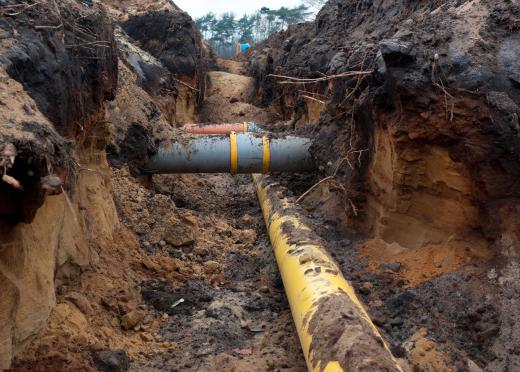Line stopping is a technique to allow operators to tap into and stop a line when no service valve exists. This can allow people to work on plumbing while a system is still active and pressurized to prevent stoppages. Firms specializing in this service are available to perform it in many areas. Some utilities and other companies also maintain their own line stopping crews because they need to perform this procedure often enough that an on-call team is merited.
When a problem arises in a line, it is necessary to clear the line so technicians can work on it. This could require activation of a shutoff valve to cut the flow of fluid, gas, or other materials in the line, which would result in a stoppage. Whatever is supplied by the line in normal conditions will not get materials anymore, which could be a critical problem in the case of a line that supplies something like oxygen to hospitals, or water to homes.

Conversely, the shutoff could create a problem from the other end; people need to be able to flush toilets, for example. If a city needed to do work on the sewer system for more than a few hours, a public health problem could arise if they activated shut offs and no longer allowed homes and businesses to access the sewer. Line stopping can allow for work on such sensitive systems without disrupting the service.
In a technique also known as hot tapping, operators fix a pipe at an angle and drill through to create access to the working line. Material from the line naturally flows into the new pipe, which can be opened and closed with a valve. The pipe can be connected to another point along the line in question to bypass the area that needs repair or inspection, and a block can be placed in the line to force the contents into the new pipe. The line stopping bypass supplies a clean flow of material, while exposing a section of pipe for work.
The line stopping process can allow for bypasses on both short and long distances, for varying periods of time. Some care may be necessary with pipes that carry dangerous materials like sewage or corrosive chemicals. The technicians need adequate training to secure the contents of the line and may need to wear protective gear while they perform the hot tapping procedure. When the work is done, they can release the line stop, fix the hole they created, and remove the bypass piping.
Ever since she began contributing to the site several years ago, Mary has embraced the exciting challenge of being a About Mechanics researcher and writer. Mary has a liberal arts degree from Goddard College and spends her free time reading, cooking, and exploring the great outdoors.

